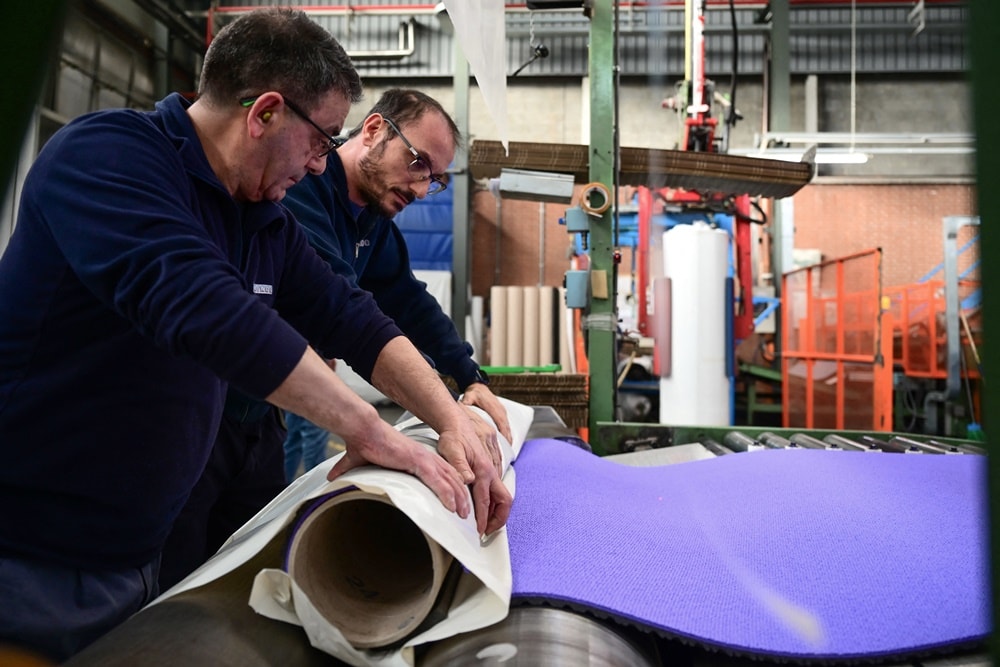The striking purple athletic track produced by the Italian company Mondo for the Olympic Games in Paris may be the fastest track yet for top athletes competing for a coveted medal.
Mondo, located in the town of Alba in Italy’s Piedmont region, first made this track in 1976 for the Montreal Games. The “Mondotrack EB” will now be adapted for Paris’ 13th Olympic Games and used for 46 of the 48 athletic events at the Stade de France.
Mondo says the new surface is an improvement on the one used at the Olympic Games in Tokyo in 2020 and on which athletes broke three world records. Among those record breakers were Karsten Warholm and Sydney McLaughlin-Levrone who set new records in the 400 m hurdles for men and women respectively.
“We changed the design of the cells on the lower layer of the track from those used for the track in Tokyo,” said Maurizio Stroppiana, deputy president of Mondo’s sports division.
“This reduces athletes’ energy loss and sends this energy back to them at the peak of movement.”
However, Andrea Marenghi, manager of research and development at Mondo, says that the company cannot just make whatever it wants when it comes to the track’s composition.
“Very strict criteria have been established by the International Olympic Committee (IOC) to protect athletes and not hinder their technique.
“Athletes are performing better than ever and the track offers nothing that these athletes don’t already have.”
Unlike the traditional terracotta color, the Paris track will be purple.
Marenghi says two new shades will be used: one for the competition area and one for the technical area. It will also only be used for the Games in France.
“We wanted an original colour,” said former decathlete Alain Blondel, head of athletics and para-athletics events at the Paris Games.
“The two shades ensure maximum contrast on visual material and place emphasis on the athletes.”
The course, which is a total of 21,000 m² in size, may be purple in color, but it is also “greener” than ever before as it is produced with many natural materials.
“Nearly 50% of the track’s components are recyclable or from recycled materials… we were just over 30% with the track in London in 2012,” said Giorgio Lesage, head of sustainability and innovation at Mondo.








